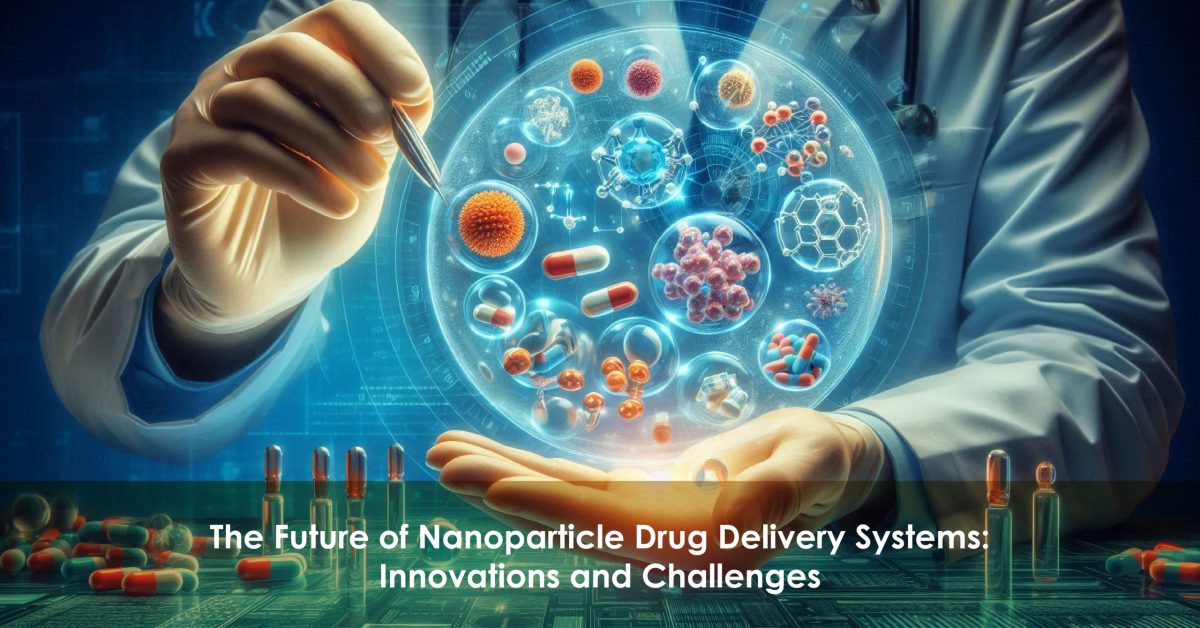One of the most interesting new advances in the field of medicine is the drug delivery system based on nanoparticles. It can provide delivery into the cell or a specifically targeted tissue with accuracy previously unattainable, high efficiency, and huge potential to cure a rather long list of pathologies, starting from cancer and cardiovascular diseases to infectious diseases. The drug nanoparticle delivery system has improved over the years in terms of innovation of materials, design, and functionalization that improves the delivery of therapeutic agents significantly, their stability, and the bioavailability of such systems. Yet, despite all these varieties of these systems, there still are a few challenges that should be taken care of for their potential applications in a clinical setting. The present paper discusses the future of nanoparticle drug delivery systems, new developments in the area, and challenges to be passed to enable the system to become part and parcel of modern medicine.
Advances in Nanoparticle Drug Delivery Systems
The need to elevate the efficacy and safety of drugs prompted scientists to work on nanoparticle drug delivery systems. These pose problems because of the poor solution, rapid body clearance, and non-specific distribution, generally leading to therapeutic effects being less than optimum and side effects. Nanoparticles can resolve this because of their small size and the possibility of changing their surface properties, which ensures controlled release of a drug, prolongs its circulation time, and enables targeted delivery to selected tissues.
An example of the latest innovative development in the nanoparticle drug delivery system is the PEGylation of polyethylene glycol on the surface of nanoparticles. Based on this process, PEGylation can enhance the biocompatibility of nanoparticles and inhibit the recognition and clearance of nanoparticles by the host’s immune system, thus enhancing the circulation time in the bloodstream. This is a critical requirement for drugs administered to unreachable places like tumors, where the requirement is for a long period of exposure for effective treatment.
Surface modification techniques have also been utilized to equip nanoparticles with improved targeting capabilities. Through the attachment of ligands to the nanoparticle surface that recognize absolutely receptors that exist on the surface of targeted cells, researchers can devise systems that would bind selectively with such entities, thereby tailoring a complex system that guarantees delivery of a drug exactly where it is required. This ought to lead to an improvement in efficacy for the drug while minimizing the possibility of harming normal tissues.
Biodegradable Nanoparticles
Another approach toward that end is biodegradable nanoparticles, which should degrade into nontoxic byproducts after payload content delivery. That way, there are fewer concerns about long-term toxicity, and the nanoparticles do not need to be cleared from the body, making them suitable for repeated doses or chronic treatments. Generally, in preparing nanoparticles, a biodegradable polymer like PLGA is used to ensure the balance between stability and degradation.
Another advantage of biodegradable nanoparticles is sustained drug delivery. Drug release could be managed by adjusting the composition and structure of the polymer matrix, which in turn adjusts the release rate of the drug from the nanoparticles, thus delivering a constant therapeutic dose over an extended period. This really works well for long-term treatments such as hormone replacement therapy or the treatment of chronic pain.
